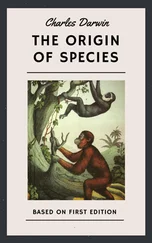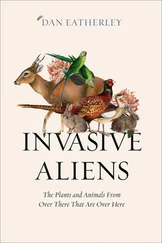Charles Darwin - The Variation of Animals and Plants under Domestication — Volume 1
Здесь есть возможность читать онлайн «Charles Darwin - The Variation of Animals and Plants under Domestication — Volume 1» — ознакомительный отрывок электронной книги совершенно бесплатно, а после прочтения отрывка купить полную версию. В некоторых случаях можно слушать аудио, скачать через торрент в формате fb2 и присутствует краткое содержание. Жанр: foreign_antique, foreign_prose, на английском языке. Описание произведения, (предисловие) а так же отзывы посетителей доступны на портале библиотеки ЛибКат.
- Название:The Variation of Animals and Plants under Domestication — Volume 1
- Автор:
- Жанр:
- Год:неизвестен
- ISBN:нет данных
- Рейтинг книги:5 / 5. Голосов: 1
-
Избранное:Добавить в избранное
- Отзывы:
-
Ваша оценка:
- 100
- 1
- 2
- 3
- 4
- 5
The Variation of Animals and Plants under Domestication — Volume 1: краткое содержание, описание и аннотация
Предлагаем к чтению аннотацию, описание, краткое содержание или предисловие (зависит от того, что написал сам автор книги «The Variation of Animals and Plants under Domestication — Volume 1»). Если вы не нашли необходимую информацию о книге — напишите в комментариях, мы постараемся отыскать её.
The Variation of Animals and Plants under Domestication — Volume 1 — читать онлайн ознакомительный отрывок
Ниже представлен текст книги, разбитый по страницам. Система сохранения места последней прочитанной страницы, позволяет с удобством читать онлайн бесплатно книгу «The Variation of Animals and Plants under Domestication — Volume 1», без необходимости каждый раз заново искать на чём Вы остановились. Поставьте закладку, и сможете в любой момент перейти на страницу, на которой закончили чтение.
Интервал:
Закладка:
It is a more important consideration that several canine species evince (as will be shown in a future chapter) no strong repugnance or inability to breed under confinement; and the incapacity to breed under confinement is one of the commonest bars to domestication. Lastly, savages set the highest value, as we shall see in the chapter on Selection, on dogs: even half- tamed animals are highly useful to them: the Indians of North America cross their half-wild dogs with wolves, and thus render them even wilder than before, but bolder: the savages of Guiana catch and partially tame and use the whelps of two wild species of Canis, as do the savages of Australia those of the wild Dingo. Mr. Philip King informs me that he once trained a wild Dingo puppy to drive cattle, and found it very useful. From these several considerations we see that there is no difficulty in believing that man might have domesticated various canine species in different countries. It would indeed have been a strange fact if one species alone had been domesticated throughout the world.
We will now enter into details. The accurate and sagacious Richardson says, "The resemblance between the Northern American wolves (Canis lupus, var. occidentalis) and the domestic dogs of the Indians is so great that the size and strength of the wolf seems to be the only difference. I have more than once mistaken a band of wolves for the dogs of a party of Indians; and the howl of the animals of both species is prolonged so exactly in the same key that even the practised ear of the Indian fails at times to discriminate them.' He adds that the more northern Esquimaux dogs are not only extremely like the grey wolves of the Arctic circle in form and colour, but also nearly equal them in size. Dr. Kane has often seen in his teams of sledge-dogs the oblique eye (a character on which some naturalists lay great stress), the drooping tail, and scared look of the wolf. In disposition the Esquimaux dogs differ little from wolves, and, according to Dr. Hayes, they are capable of no attachment to man, and are so savage that when hungry they will attack even their masters. According to Kane they readily become feral. Their affinity is so close with wolves that they frequently cross with them, and the Indians take the whelps of wolves "to improve the breed of their dogs." The half-bred wolves sometimes (Lamare- Picquot) cannot be tamed, "though this case is rare;" but they do not become thoroughly well broken in till the second or third generation. These facts show that there can be but little, if any, sterility between the Esquimaux dog and the wolf, for otherwise they would not be used to improve the breed. As Dr. Hayes says of these dogs, "reclaimed wolves they doubtless are." (1/14. The authorities for the foregoing statements are as follow: — Richardson in 'Fauna Boreali-Americana' 1829 pages 64, 75; Dr. Kane 'Arctic Explorations' 1856 volume 1 pages 398, 455; Dr. Hayes 'Arctic Boat Journey' 1860 page 167. Franklin's 'Narrative' volume 1 page 269, gives the case of three whelps of a black wolf being carried away by the Indians. Parry, Richardson, and others, give accounts of wolves and dogs naturally crossing in the eastern parts of North America. Seeman in his 'Voyage of H.M.S. "Herald"' 1853 volume 2 page 26, says the wolf is often caught by the Esquimaux for the purpose of crossing with their dogs, and thus adding to their size and strength. M. Lamare-Picquot in 'Bull. de la Soc. d'Acclimat.' tome 7 1860 page 148, gives a good account of the half- bred Esquimaux dogs.)
North America is inhabited by a second kind of wolf, the prairie-wolf (Canis latrans), which is now looked at by all naturalists as specifically distinct from the common wolf; and is, according to Mr. J.K. Lord, in some respects intermediate in habits between a wolf and a fox. Sir J. Richardson, after describing the Hare Indian dog, which differs in many respects from the Esquimaux dog, says, "It bears the same relation to the prairie-wolf that the Esquimaux dog does to the great grey wolf." He could, in fact, detect no marked difference between them; and Messrs. Nott and Gliddon give additional details showing their close resemblance. The dogs derived from the above two aboriginal sources cross together and with the wild wolves, at least with the C. occidentalis, and with European dogs. In Florida, according to Bartram, the black wolf-dog of the Indians differs in nothing from the wolves of that country except in barking. (1/15. 'Fauna Boreali-Americana' 1829 pages 73, 78, 80. Nott and Gliddon, 'Types of Mankind' page 383. The naturalist and traveller Bartram is quoted by Hamilton Smith in 'Naturalist Lib.' volume 10 page 156. A Mexican domestic dog seems also to resemble a wild dog of the same country; but this may be the prairie-wolf. Another capable judge, Mr. J.K. Lord ('The Naturalist in Vancouver Island' 1866 volume 2 page 218), says that the Indian dog of the Spokans, near the Rocky Mountains, "is beyond all question nothing more than a tamed Cayote or prairie-wolf," or Canis latrans.)
Turning to the southern parts of the new world, Columbus found two kinds of dogs in the West Indies; and Fernandez (1/16. I quote this from Mr. R. Hill's excellent account of the Alco or domestic dog of Mexico, in Gosse's 'Naturalist's Sojourn in Jamaica' 1851 page 329.) describes three in Mexico: some of these native dogs were dumb — that is, did not bark. In Guiana it has been known since the time of Buffon that the natives cross their dogs with an aboriginal species, apparently the Canis cancrivorus. Sir R. Schomburgk, who has so carefully explored these regions, writes to me, "I have been repeatedly told by the Arawaak Indians, who reside near the coast, that they cross their dogs with a wild species to improve the breed, and individual dogs have been shown to me which certainly resembled the C. cancrivorus much more than the common breed. It is but seldom that the Indians keep the C. cancrivorus for domestic purposes, nor is the Ai, another species of wild dog, and which I consider to be identical with the Dusicyon silvestris of H. Smith, now much used by the Arecunas for the purpose of hunting. The dogs of the Taruma Indians are quite distinct, and resemble Buffon's St. Domingo greyhound." It thus appears that the natives of Guiana have partially domesticated two aboriginal species, and still cross their dogs with them; these two species belong to a quite different type from the North American and European wolves. A careful observer, Rengger (1/17. 'Naturgeschichte der Saugethiere von Paraguay' 1830 s. 151.), gives reasons for believing that a hairless dog was domesticated when America was first visited by Europeans: some of these dogs in Paraguay are still dumb, and Tschudi (1/18. Quoted in Humboldt 'Aspects of Nature' (English translation) volume 1 page 108.) states that they suffer from cold in the Cordillera. This naked dog is, however quite distinct from that found preserved in the ancient Peruvian burial-places, and described by Tschudi, under the name of Canis ingae, as withstanding cold well and as barking. It is not known whether these two distinct kinds of dog are the descendants of native species, and it might be argued that when man first migrated into America he brought with him from the Asiatic continent dogs which had not learned to bark; but this view does not seem probable, as the natives along the line of their march from the north reclaimed, as we have seen, at least two N. American species of Canidae.
Turning to the Old World, some European dogs closely resemble the wolf; thus the shepherd dog of the plains of Hungary is white or reddish-brown, has a sharp nose, short, erect ears, shaggy coat, and bushy tail, and so much resembles a wolf that Mr. Paget, who gives this description, says he has known a Hungarian mistake a wolf for one of his own dogs. Jeitteles, also, remarks on the close similarity of the Hungarian dog and wolf. Shepherd dogs in Italy must anciently have closely resembled wolves, for Columella (vii. 12) advises that white dogs be kept, adding, "pastor album probat, ne pro lupo canem feriat." Several accounts have been given of dogs and wolves crossing naturally; and Pliny asserts that the Gauls tied their female dogs in the woods that they might cross with wolves. (1/19. Paget 'Travels in Hungary and Transylvania' volume 1 page 501. Jeitteles 'Fauna Hungariae Superioris' 1862 s. 13. See Pliny 'History of the World' (English translation) 8th book ch. 40 about the Gauls crossing their dogs. See also Aristotle 'Hist. Animal.' Lib. 8 c. 28. For good evidence about wolves and dogs naturally crossing near the Pyrenees, see M. Mauduyt 'Du Loup et de ses Races' Poitiers, 1851; also Pallas in 'Acta Acad. St. Petersburgh' 1780 part 2 page 94.) The European wolf differs slightly from that of North America, and has been ranked by many naturalists as a distinct species. The common wolf of India is also by some esteemed as a third species, and here again we find a marked resemblance between the pariah dogs of certain districts of India and the Indian wolf. (1/20. I give this on excellent authority, namely Mr. Blyth (under the signature of Zoophilus) in the 'Indian Sporting Review' October 1856 page 134. Mr. Blyth states that he was struck with the resemblance between a brush-tailed race of pariah-dogs, north-west of Cawnpore, and the Indian wolf. He gives corroborative evidence with respect to the dogs of the valley of the Nerbudda.)
Читать дальшеИнтервал:
Закладка:
Похожие книги на «The Variation of Animals and Plants under Domestication — Volume 1»
Представляем Вашему вниманию похожие книги на «The Variation of Animals and Plants under Domestication — Volume 1» списком для выбора. Мы отобрали схожую по названию и смыслу литературу в надежде предоставить читателям больше вариантов отыскать новые, интересные, ещё непрочитанные произведения.
Обсуждение, отзывы о книге «The Variation of Animals and Plants under Domestication — Volume 1» и просто собственные мнения читателей. Оставьте ваши комментарии, напишите, что Вы думаете о произведении, его смысле или главных героях. Укажите что конкретно понравилось, а что нет, и почему Вы так считаете.












